In this comprehensive guide, we will explore the five most important things you should consider before buying a swimming pool. From understanding zoning regulations to choosing the right type of pool, these insights will help you make an informed decision.
1. Purpose of the Pool
The first and most fundamental question is: Why do you want a swimming pool?
Understanding your primary purpose for having a pool will guide every subsequent decision. Homeowners usually fall into one or more of the following categories:
a. Recreation and Entertainment
Do you envision hosting backyard barbecues, parties, or family gatherings? If so, you’ll need a pool designed with ample space, seating areas, and possibly a shallow end for games.
b. Fitness and Exercise
If swimming laps or aquatic workouts are your priority, consider a lap pool or one with a consistent depth. Features like swim jets can also enhance the exercise experience.
c. Relaxation and Aesthetics
For those looking to create a serene oasis, focus on design, lighting, and landscaping. A plunge pool or a pool with spa-like features such as waterfalls or jacuzzis may be ideal.
d. Property Value and Appeal
Pools can enhance curb appeal and property value in certain markets. However, this depends heavily on your local real estate climate, so be sure to consult a local agent or appraiser.
Defining your pool’s purpose ensures that your investment serves you for years to come.
2. Budgeting Beyond Installation
Budgeting for a swimming pool goes beyond the initial installation costs. It’s essential to understand the full financial picture.
a. Installation Costs
Pool installation can range from $30,000 to over $100,000 depending on size, design, and materials. In-ground pools generally cost more than above-ground options but offer more customization and durability.
b. Ongoing Maintenance
Monthly maintenance can range from $80 to $150 for basic cleaning and chemical balancing. More elaborate pools with waterfalls, heaters, or automation systems will increase these costs.
c. Utilities
Expect higher electricity and water bills. Heating and filtration systems can be energy-intensive, and water usage may increase due to evaporation and regular top-offs.
d. Insurance
Pools increase liability risks, which often results in higher homeowner’s insurance premiums. Check with your provider about necessary policy adjustments.
e. Repairs and Renovations
Over time, your pool may need resurfacing, liner replacements, or equipment upgrades. Setting aside a pool maintenance reserve fund is wise.
By planning for all expenses, you avoid unexpected costs and can better assess the long-term affordability.
3. Type of Pool and Materials
Selecting the right type of pool is another vital decision. Your budget, location, and intended use will influence the ideal pool type.
a. In-Ground vs. Above-Ground
- In-Ground Pools: More expensive and permanent, with options for concrete, fiberglass, or vinyl liner. Great for long-term investment and customized design.
- Above-Ground Pools: More affordable and faster to install. Limited design options but easier to remove or relocate.
b. Pool Materials
- Concrete: Highly customizable and durable. Can be shaped into virtually any design. Requires more maintenance and a higher initial investment.
- Fiberglass: Pre-molded shapes make installation quick. Lower maintenance, but less flexible in terms of customization.
- Vinyl Liner: Least expensive initially. Offers moderate customization but liners need replacing every 7–10 years.
c. Pool Shape and Size
Consider the layout of your backyard, zoning setbacks, and sun exposure. Geometric pools offer a modern aesthetic, while freeform pools blend naturally into landscapes.
Matching the pool type to your needs and budget will save time and reduce headaches during construction.
4. Local Zoning Laws and HOA Restrictions
Legal compliance is non-negotiable. Local governments and homeowners associations (HOAs) have specific regulations regarding pool installation.
a. Permits and Inspections
Most municipalities require a building permit to construct a pool. This process may include zoning approval, utility line checks, and inspections at various construction phases.
b. Setback Requirements
Zoning laws dictate how close a pool can be to your property lines, structures, and septic systems. Violations can lead to fines and even mandatory removal.
c. Safety Codes
You may be required to install a fence, pool cover, or alarms. Safety regulations are especially strict in areas with a high population of children.
d. HOA Rules
If you live in a neighborhood with an HOA, they may restrict the size, shape, color, or even existence of a pool. Get written approval before breaking ground.
Taking time to understand these rules will prevent costly delays or legal disputes.
5. Maintenance and Upkeep Commitment
A swimming pool requires ongoing attention. If neglected, it can become a safety hazard, eyesore, and financial liability.
a. Cleaning
Pools need to be skimmed, vacuumed, and brushed regularly. Debris, algae, and bacteria must be kept in check.
b. Chemical Balancing
Maintaining proper pH levels, chlorine, and other chemical levels is critical to swimmer health and equipment longevity.
c. Equipment Monitoring
Filters, pumps, heaters, and lighting systems require regular inspection and servicing. Automation can reduce some workload but not eliminate it entirely.
d. Seasonal Care
In colder climates, pools need to be winterized. In warmer areas, year-round care is essential to avoid algae blooms and system breakdowns.
e. Hiring Help vs. DIY
While many homeowners opt for professional pool services, others choose the DIY route. Know your limits and be realistic about the time commitment.
Understanding the maintenance demands helps you evaluate whether a pool fits into your lifestyle.
Final Thoughts
Adding a swimming pool to your home is a lifestyle upgrade and a substantial investment. By carefully considering its purpose, full cost, construction type, legal requirements, and upkeep needs, you’re better positioned to enjoy your pool without surprises.
Before you make the plunge, consult with professionals, speak to neighbors with pools, and even tour pool showrooms. A well-planned purchase is one you’ll enjoy for decades.
Contact Us
Thinking about adding a pool to your property? Our experienced team can help you design and install the perfect swimming pool for your home.
Contact WSV Group Inc.
📞 727-625-1374
🌐 www.wsvgroup.com
📧 [email protected]
Let’s build your backyard dream together!
]]>
These designs are more than just places to cook. They’re where laughter and tasty meals meet Southern charm. Imagine sharing stories with loved ones over a juicy steak or a fresh salad. It’s not just a trend; it’s a way of life that brings beauty and connection to our homes.
The Southeast’s climate is perfect for creating beautiful outdoor kitchens. These spaces improve our homes and reflect the area’s culture. In this article, we’ll look at five amazing outdoor kitchen designs. They show how to mix beauty with function, inspiring your own outdoor cooking area.
Key Takeaways
- Outdoor kitchen designs for the Southeast emphasize functionality and aesthetics.
- These spaces promote socializing and enjoyment of the outdoors.
- Local materials and design elements enhance the appeal of backyard kitchen design.
- Rich climate provides ample opportunity for year-round outdoor cooking.
- Innovative trends are shaping the future of outdoor cooking spaces.
- Blending cultural influences leads to unique and inviting outdoor areas.
Introduction to Outdoor Kitchen Designs in the Southeast
The Southeast has a unique charm that inspires outdoor kitchen designs. Its warm climate and rich culture make outdoor cooking and entertaining a joy. Alfresco dining is a big part of the southern lifestyle, making outdoor spaces both functional and beautiful.
When designing a southern outdoor kitchen, durable materials are key. They must handle humidity and occasional rain. Ideas should include natural stone, wood cabinetry, and weather-resistant furniture. These choices boost both looks and durability.
Adding comfy seating and well-planned layouts makes spaces inviting. Mixing these with local food traditions turns an outdoor kitchen into the home’s heart. It’s where families and friends can enjoy meals and the beauty around them.
5 Outdoor Kitchen Designs for the Southeast America
In the southeastern United States, several outdoor kitchen designs stand out. They combine functionality with beauty. These designs ensure every outdoor gathering is special.
The first design has a large island with a built-in grill and plenty of seating. It’s perfect for socializing with friends and family. The sleek countertop, made of granite or quartz, adds elegance and prep space.
The L-shaped design is another great choice. It separates cooking and dining areas, making the space cozy. Using durable materials like teak or cedar helps it withstand the southeast’s weather.
Rustic farmhouse style outdoor kitchens are visually stunning. They use natural wood and stone. Adding vintage lighting adds to the charm.
Modern minimalist designs are simple yet effective. They use stainless steel and clean lines. This style is great for small spaces, offering both elegance and function.
Finally, a covered area is key in southeastern outdoor kitchens. It allows use all year, making it a home extension. Retractable screens or open-air designs offer protection and airflow.
Embracing the Southern Aesthetic in Outdoor Kitchens
Creating outdoor kitchens that reflect the southern style requires careful material and color choices. Using local materials makes the space look stunning and blends well with nature. This approach ensures your outdoor cooking area feels like a natural part of your surroundings.
Incorporating Local Materials
Choosing materials from the Southeast adds rustic charm to outdoor kitchens. Options like brick, natural stone, and woods such as cypress or cedar are popular. They’re durable and beautiful.
For example, brick stands up to the region’s humidity. Natural stone brings texture and character. Many projects have shown how these materials can enhance outdoor kitchens.
Color Schemes That Reflect the Region
Choosing the right colors is key to an outdoor kitchen’s ambiance. Warm tones like soft pastels and rich earth tones invite you in. These colors are inspired by the local flora, making the space more beautiful.
Right colors not only make the kitchen look better but also set the mood. It makes cooking and entertaining more fun.
Functional Features of an Outdoor Kitchen
Building an outdoor kitchen that looks good and works well is key. You need the right cooking appliances and storage to keep things tidy. A well-designed outdoor kitchen makes cooking fun and enhances your outdoor living space.
Essential Cooking Appliances
For better outdoor cooking, you need top-notch appliances. Weber offers built-in grills for efficient grilling. Kamado Joe smokers are great for slow-cooking and smoking. Other important appliances include:
- Outdoor ovens for baking and roasting
- Cooktops for versatile cooking methods
- Refrigerators to keep ingredients fresh and close at hand
Storage Solutions for Your Outdoor Cooking Space
Weather-resistant storage is vital for an organized outdoor kitchen. Cabinets made from stainless steel are durable and look good outside. Good storage keeps tools and ingredients within reach, making cooking more efficient. Think about these features when designing your outdoor kitchen:
| Type of Storage | Benefits |
|---|---|
| Cabinets | Durable and provides ample space for utensils and equipment |
| Pantries | Ideal for storing dry goods and canned products |
| Drawers | Great for organizing smaller items like spices and utensils |
Exploring Popular Layouts for Backyard Kitchens
Designing the perfect outdoor kitchen layout is key to creating a welcoming space. It’s important to decide between open vs closed designs. Each has its own benefits and drawbacks. Knowing how layouts affect flow and accessibility helps make your outdoor cooking area more functional and enjoyable.
Open vs. Closed Designs
Open designs blend the outdoor kitchen with nature, improving airflow and views. They’re great for parties. On the other hand, closed designs protect against weather, making them usable all year. Choosing between these options can greatly impact how much you enjoy your space.
| Layout Type | Advantages | Disadvantages |
|---|---|---|
| Open Design |
|
|
| Closed Design |
|
|
Flow and Accessibility in your Outdoor Cooking Space
When designing your outdoor kitchen, focus on flow and accessibility. Place cooking elements in a logical order. This makes it easy to get ingredients and tools during cooking. Also, create clear paths for guests to move around comfortably.
The choice of outdoor kitchen layout should match your style and needs. Whether you prefer open or closed designs, the goal is to create a space that’s both functional and enjoyable for outdoor living.
Incorporating Natural Elements in Outdoor Kitchen Design
Adding natural elements to your outdoor kitchen makes it warm and inviting. Stone countertops add elegance and are practical, lasting long. Wooden accent walls bring texture and warmth, contrasting nicely with the area.
Surrounding your kitchen with landscaped gardens makes it beautiful and connects you to nature. Using native plants attracts local wildlife, adding to your kitchen’s charm. Pools or fire pits become key features, making your space perfect for relaxation and gatherings.
Choosing natural materials for your outdoor kitchen is thoughtful and sustainable. It balances structure with nature, creating a peaceful spot for entertaining. Your outdoor kitchen becomes a serene retreat for friends and family.
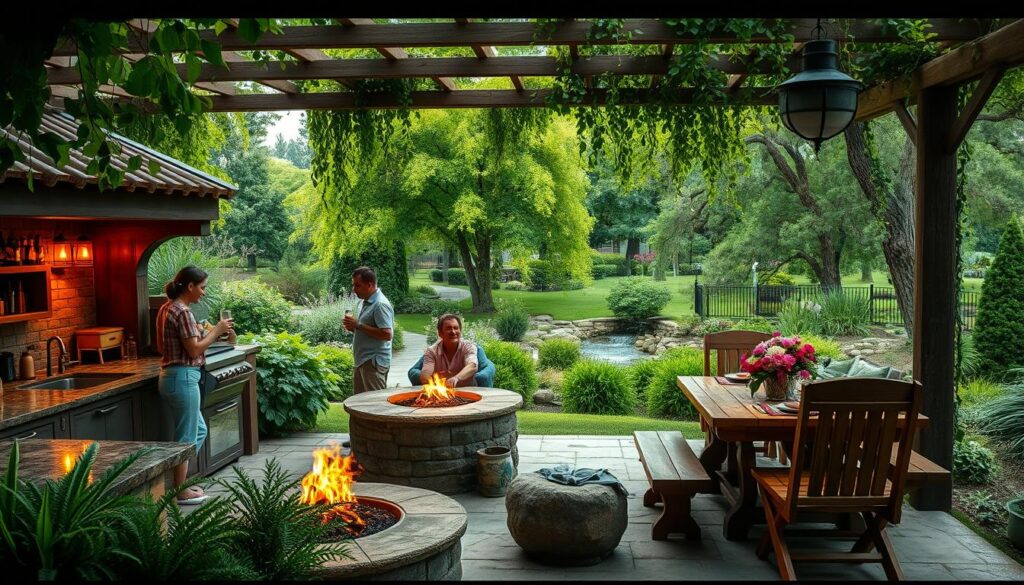
Outdoor Kitchen Ideas for Entertainment Spaces
Creating a vibrant outdoor kitchen is perfect for family and friends gatherings. It’s all about making the space great for socializing. Adding dining areas lets guests stay longer and enjoy the vibe.
Incorporating Dining Areas
Designers suggest adding dedicated dining spaces. This could be big tables or bar-style seating. It’s great for family meals or cozy nights with friends.
Built-in seating saves space, while movable furniture is flexible for different guest numbers. The layout should encourage people to talk and interact. It should blend well with cooking areas for a social feel.
Lighting Solutions for Evening Gatherings
Lighting is key for a great night atmosphere. String lights, lanterns, and under-counter lighting add beauty and extend the evening. They make the space safe and set the mood for dinner or parties.
Using different lighting types creates a welcoming feel. It lets guests relax and enjoy the evening, even after the sun goes down.
Innovative Outdoor Kitchen Features
Turning an outdoor kitchen into a great place involves adding cool features. Fireplaces and fire pits, along with built-in grills and smokers, make it stylish and useful. They’re perfect for both those who love to cook and those who just want to hang out.
Fireplaces and Fire Pits
Fireplaces and fire pits do more than just warm you up. They make your outdoor kitchen feel cozy, perfect for getting together. Think about adding stone-built fire pits or elegant fireplaces to make your space look great.
Remember, safety is key when adding fireplaces and fire pits. Make sure they’re far from things that can catch fire and have barriers around them. Keeping them clean and checking them often ensures they stay safe and fun to use all year.
Built-in Grills and Smokers
Built-in grills and smokers make cooking outside better, offering ease and efficiency. Choose from gas to charcoal grills, each with its own cooking style. Smokers are especially loved for adding smoky flavors to food.
Features like rotisserie attachments or side burners add more cooking options. Design your outdoor kitchen with a cooking area in mind. This way, everyone can cook like a pro and serve meals easily.
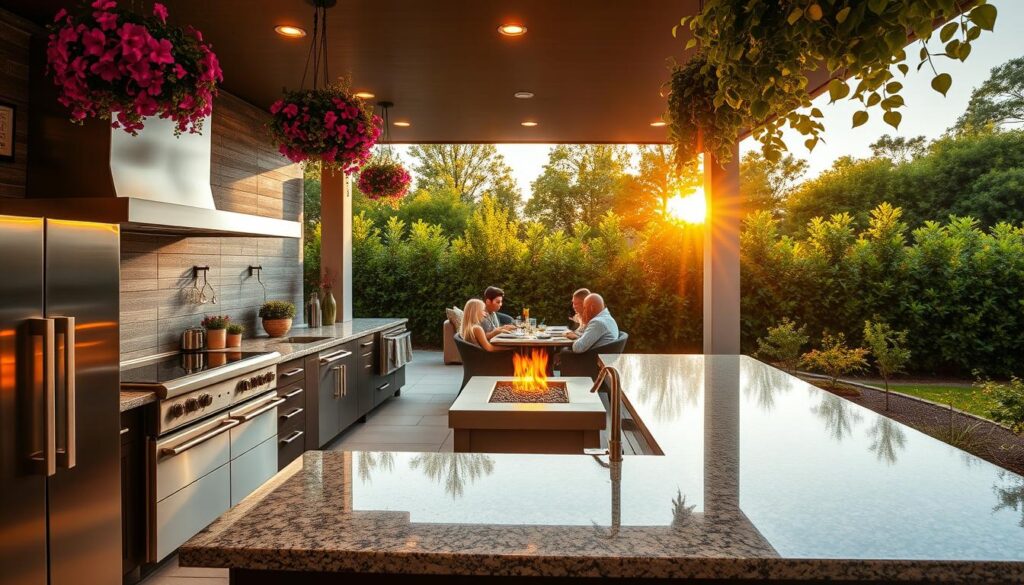
Popular Trends in Southeastern Outdoor Kitchen Design
Adding the latest trends to your outdoor kitchen can make it better and more fun. In the Southeast, people want kitchens that are good for the planet and use the latest tech. They look for ways to cook that are easy and green.
Sustainability and Eco-Friendly Choices
Designing kitchens that are good for the earth connects us to nature. Using wood from old trees is not only green but also adds a unique look. People also choose appliances that save energy, making cooking better for the planet.
- Installation of solar-powered lights and energy-efficient refrigerators.
- Use of composite materials made from recycled plastics for countertops.
- Incorporating native plants around cooking spaces to promote biodiversity.
Modern Technology in Outdoor Cooking
Modern tech makes cooking outside better, making it easy and fun. Gadgets that connect to the internet fit well in any kitchen, pleasing cooks and hosts.
- Smart grills with Wi-Fi connectivity for grilling from a distance.
- Outdoor refrigerators that maintain optimal temperature for food and drinks.
- Integrated sound systems for entertaining guests while cooking.
| Feature | Sustainability | Modern Technology |
|---|---|---|
| Materials Used | Reclaimed wood, recycled materials | High-tech appliances |
| Energy Efficiency | Solar power options | Smart control systems |
| Plant Integration | Native landscaping | Outdoor lighting with smart controls |
Using these trends in outdoor kitchens makes them look great and helps the planet. It turns cooking outside into a fun, eco-friendly activity.
Case Studies: Successful Southern Outdoor Kitchen Projects
Looking at outdoor kitchen projects in the Southeast gives us great insights. Florida is a key example, showing how to adapt to the sun and local lifestyle. These projects often blend function with beauty, inspiring others to upgrade their outdoor areas.
Florida Outdoor Kitchen Design Inspiration
In Florida, outdoor kitchens blend well with the local scenery. They often include sunshades and misting systems for comfort. Homeowners pick materials like natural stone and finishes that last, making these spaces perfect for fun times with family and friends.
Real-life Transformations in Southeast US Outdoor Kitchens
Transformations in the southeast US show a variety of styles and needs. For example, a family in Georgia turned their patio into a big kitchen with a grill and lots of counter space. In South Carolina, a coastal home got a nautical look with blue colors and driftwood decor. Each story shows how important it is to match the place with both beauty and usefulness.
Conclusion
Exploring outdoor kitchen designs shows the beauty of southeastern outdoor kitchens. It’s key to find a balance between looks and function. This way, homeowners can make an outdoor cooking space that’s both useful and beautiful.
The Southeast’s rich culture offers lots of design inspiration. With new features, your outdoor kitchen can show off your lifestyle. Imagine having gatherings where your outdoor kitchen is the center, bringing everyone together.
It’s time to use these ideas to make your outdoor space special. Choose from the many designs and let your creativity shine. Your southeastern outdoor kitchen can be a place for both relaxation and fun.
FAQ
What are the best materials for an outdoor kitchen in the Southeast US?
For outdoor kitchens in the Southeast, choose durable materials like brick, natural stone, and treated wood. They handle humidity and heat well. Plus, they offer a rustic look.
How can I design an outdoor kitchen that reflects the Southern aesthetic?
Use local materials like cypress or cedar. Pick color schemes with soft pastels or earthy tones. Adding Southern floral elements will add charm to your design.
What are essential features for my outdoor cooking space?
Your outdoor kitchen should have built-in grills, storage, food prep areas, and comfy seating. These features boost functionality and make entertaining better.
How can I ensure my outdoor kitchen layout promotes airflow and accessibility?
Choose an open layout with zones for cooking, dining, and socializing. Make sure paths are clear and furniture allows easy movement.
What lighting solutions work best for an outdoor kitchen?
Use ambient lighting like string lights, lanterns, and under-counter LED lights. They create a cozy atmosphere for evening gatherings.
Are there any eco-friendly trends in outdoor kitchen design?
Yes! Eco-friendly trends include using reclaimed materials, energy-efficient appliances, and native plants. They’re popular in Southeastern designs.
How can I incorporate natural elements into my outdoor kitchen?
Add stone countertops, wooden accent walls, and landscaped gardens. These features make your space warm and inviting, connecting you with nature.
What are some popular styles for outdoor kitchens in Florida?
In Florida, outdoor kitchens often have shaded areas, misting systems, and are close to pools. They’re great for enjoying the outdoors all year.
Is it worth investing in modern technology for outdoor cooking?
Absolutely! Modern appliances like smart grills and outdoor refrigerators make cooking easier. They add convenience and efficiency, enhancing your outdoor time with loved ones.
Here are four common HVAC problems and what you can do to resolve them.
1. Uneven Heating or Cooling
Symptoms: Certain rooms are too hot or too cold, while others feel just right.
Common Causes:
- Blocked vents or registers.
- Leaky or improperly sealed ductwork.
- A malfunctioning thermostat.
What to Do:
- Check your vents: Ensure they are open and unobstructed by furniture, curtains, or debris.
- Inspect ductwork: Look for visible leaks or disconnections and seal them with duct tape or mastic sealant.
- Upgrade your thermostat: A smart thermostat can help regulate temperature more evenly by learning your preferences and adjusting accordingly.
If these steps don’t solve the problem, consult an HVAC technician to assess your system for more complex issues.
2. Frequent Cycling
Symptoms: Your HVAC system turns on and off more often than usual.
Common Causes:
- A dirty air filter restricting airflow.
- An oversized or undersized unit for your home.
- Electrical or sensor issues within the system.
What to Do:
- Replace the air filter: A clean filter can improve airflow and reduce strain on your system.
- Schedule a professional evaluation: If the system’s size is mismatched to your home, you may need adjustments or a replacement.
Ignoring frequent cycling can lead to higher energy bills and unnecessary wear and tear on your system.
3. Strange Noises
Symptoms: Unusual sounds like banging, squealing, or rattling coming from your AC or heater.
Common Causes:
- Loose or damaged components.
- A worn-out blower belt.
- Debris caught in the system.
What to Do:
- Turn off the system immediately: Continuing to run your HVAC system could cause further damage.
- Inspect for visible debris: Carefully remove any obstructions near the fan or vents.
- Call a professional: Strange noises often indicate mechanical problems that require expert attention.
4. Insufficient Airflow
Symptoms: Weak or no air coming from the vents when the system is running.
Common Causes:
- A clogged air filter.
- Blocked ductwork.
- Issues with the blower motor or fan.
What to Do:
- Replace the air filter: If it’s dirty, this simple fix can restore airflow.
- Check for visible obstructions: Make sure nothing is blocking the vents or registers.
- Call an HVAC technician: If the blower motor or fan is malfunctioning, professional repair or replacement may be necessary.
Pro Tip: Preventive Maintenance Saves Time and Money
Regular maintenance is the best way to avoid HVAC issues. Schedule a professional tune-up at least once a year to ensure your system runs efficiently. During a tune-up, technicians can identify and fix small problems before they become costly repairs.
When to Call the Pros
Some HVAC issues can be handled with DIY fixes, but others require a trained professional. If your system isn’t performing as it should after basic troubleshooting, it’s time to contact a trusted HVAC expert.
At WSV Group, we specialize in diagnosing and repairing HVAC systems. Our experienced team is here to ensure your home stays comfortable no matter the season. Call us today to schedule a service appointment or consultation.
By staying informed about these common problems and how to address them, you’ll keep your HVAC system running smoothly and your home comfortable year-round.
]]>As the sun shines brighter and temperatures rise, summer is one of the most active seasons for home construction and renovation. If you’re in the market for a new home, this is the perfect time to stay updated on the latest trends and construction niches that could influence your buying decisions. Whether you’re purchasing a new property or considering a custom-built home, understanding what’s happening in the construction world can help you make informed choices. Here are some niche trends in summer 2024 to watch out for.
1. Sustainable and Eco-Friendly Homes
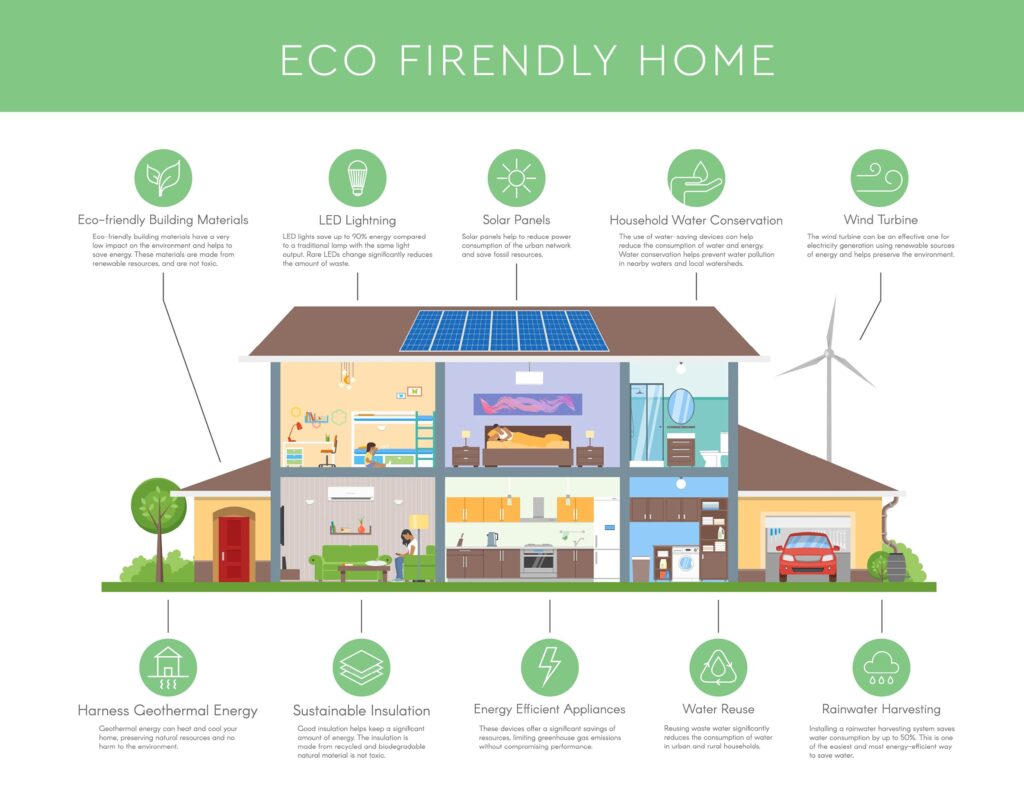
With environmental concerns growing globally, eco-friendly construction is one of the biggest trends shaping the market. Homes that incorporate sustainable materials, energy-efficient systems, and renewable energy sources like solar power are becoming increasingly popular. Look for homes with:
- Solar roofing systems
- Energy-efficient windows (low-E glass)
- Recycled or reclaimed materials for flooring and insulation
- Water conservation systems, such as rainwater harvesting and low-flow fixtures
Why it matters: Sustainable homes not only reduce your carbon footprint but also save you money in the long run by lowering energy and utility costs.
2. Smart Home Technology Integration

In 2024, more homes are being built with advanced smart technology systems right from the foundation. Fully integrated smart homes offer convenience, safety, and energy savings through:
- Automated lighting and temperature controls
- Smart security systems with cameras, doorbells, and alarms
- Energy usage monitoring that adjusts based on occupancy
- Voice-activated controls and AI-powered assistants like Alexa and Google Home
Why it matters: Homes with built-in smart systems add value to the property and cater to the growing demand for connected living spaces.
3. Outdoor Living Spaces
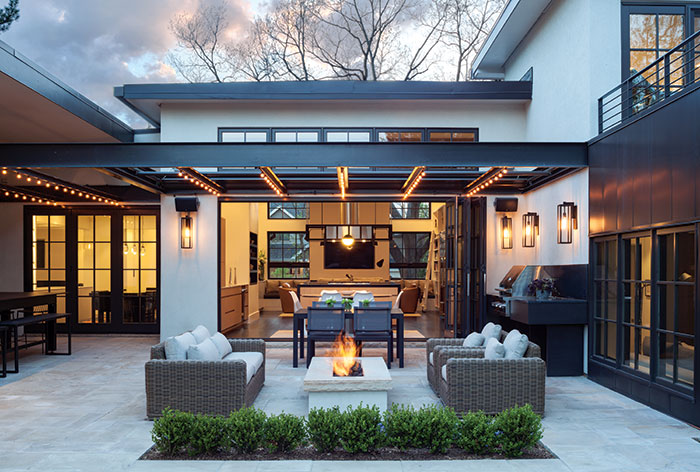
During the summer months, outdoor living areas are a major focus in home construction. Buyers and builders alike are paying attention to creating beautiful, functional spaces that bring the indoors out. Key elements include:
- Outdoor kitchens and BBQ areas
- Covered patios with weather-resistant furniture
- Fire pits or outdoor fireplaces
- Lush landscaping with native plants for lower maintenance
Why it matters: An inviting outdoor space expands your home’s living area, perfect for summer entertaining or relaxing evenings, and adds resale value.
4. Open Floor Plans with Flexibility
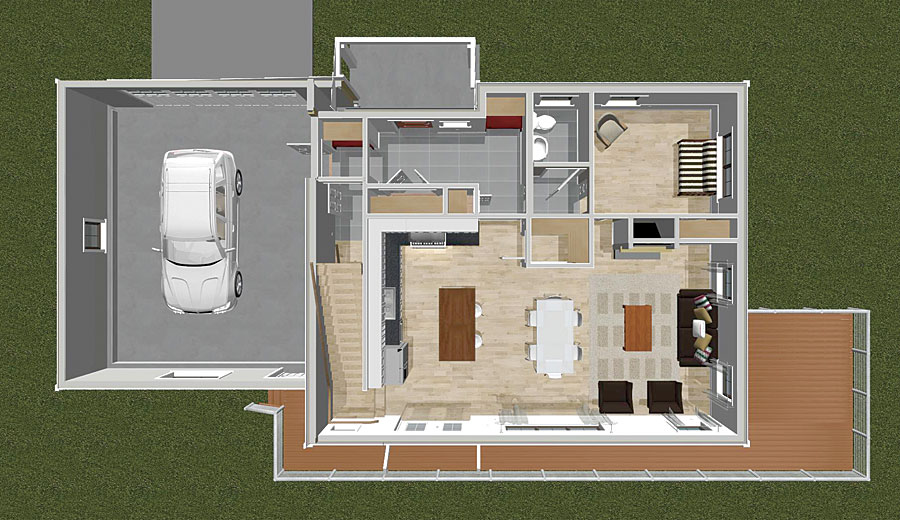
Open-concept designs continue to dominate home layouts, but with a twist. In 2024, flexibility is key. Instead of purely open spaces, new construction is focusing on adaptable rooms that can be used for multiple purposes. For instance:
- Sliding or movable walls that allow spaces to expand or close off
- Flexible office spaces that can be turned into guest rooms
- Multi-purpose rooms that can serve as playrooms, home gyms, or hobby spaces
Why it matters: Flexibility allows homeowners to adapt their homes to changing needs, whether it’s working from home, growing a family, or accommodating hobbies.
5. Energy Storage and Resilience
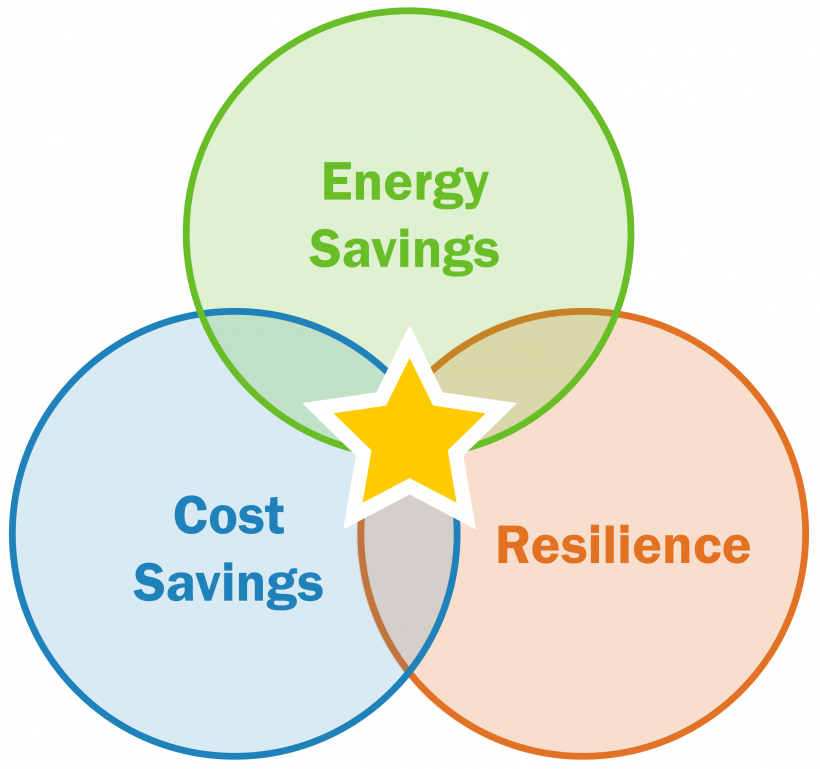
In regions prone to power outages, particularly during heatwaves and storms, energy resilience is becoming a critical consideration. New homes are being built with:
- Home battery storage systems like Tesla Powerwall or LG Chem batteries
- Backup generators or solar battery storage
- Resilient construction materials to withstand extreme weather conditions
Why it matters: Homes equipped with energy storage offer peace of mind and protection during power outages, especially during the peak summer season when electricity demand is high.
6. Focus on Health and Wellness
The post-pandemic era has significantly influenced how homes are designed. Construction trends now place a greater emphasis on health and wellness, which includes:
- Improved air quality through better ventilation systems and air purifiers
- Non-toxic building materials (e.g., low-VOC paints, eco-friendly insulation)
- Home gyms and wellness spaces for yoga or meditation
- Natural light optimization with large windows and skylights
Why it matters: Homes that promote health and wellness are in high demand, offering a more comfortable and safe living environment.
7. Accessory Dwelling Units (ADUs)
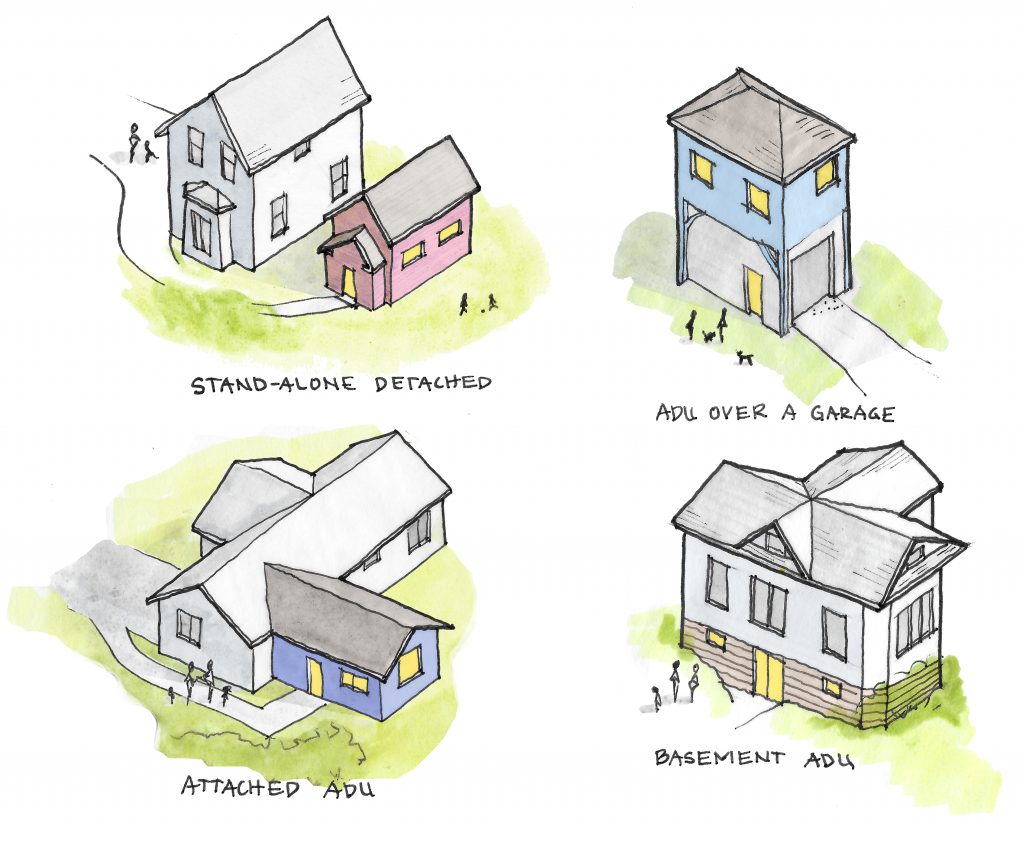
Accessory Dwelling Units, or ADUs, have surged in popularity, especially in urban and suburban areas where space is limited. These are secondary units, often detached from the main home, used for various purposes like:
- Guest houses
- Home offices
- Rental properties for extra income
- In-law suites for multigenerational living
Why it matters: ADUs provide additional living space and versatility, while also increasing the property’s value.
Conclusion
As you explore the housing market this summer, keep an eye on these emerging construction trends. Whether it’s sustainability, smart home features, or flexible designs, these trends can influence both the short-term comfort and long-term value of your home. By understanding the latest in construction, you can ensure that your investment is aligned with future-forward, market-ready features that enhance your living experience. Happy house hunting!
Wire shelving is a type of storage organization that uses shelves made of wire. It’s popularity is deserved because it is affordable, versatile, and easy to install. Wire shelving can be used in a variety of settings, including the home, office, garage, and more
Pegboard is a type of hardboard with regularly spaced holes drilled into it. These holes are used to hold pegs or hooks from which various objects can be hung. Pegboard is commonly used in workshops and garages to organize tools and other equipment. It can also be used in the home for things like organizing keys, leashes, and other small items.
Pegboard is an easy way to add organization and storage to any space. It is versatile and can be used in a variety of ways. Whether you need a place to hang tools in your workshop or want to organize your keys and leashes, pegboard is a great solution.
A garage cabinet is a storage system that helps to organize a garage by providing a place to store tools, equipment, and other items. Garage cabinets come in many different styles and can be made from various materials, such as wood, plastic, or metal.
Garage cabinets can be purchased at many home improvement stores or online. They typically come in standard sizes, but custom sizes are also available. Garage cabinets can be mounted on the wall or placed on the floor. When choosing a garage cabinet, it is important to consider the size of the garage and the type of items that will be stored in it.
Tool chests are a great way to get your garage or workshop organized. They provide a place to store your tools, so you can easily find them when you need them. Tool chests come in a variety of sizes and styles, so you can find one that fits your needs.
Tool chests are a great way to organize your tools. They provide a place to store your tools, so you can easily find them when you need them. Tool chests come in a variety of sizes and styles, so you can find one that fits your needs.
Tool chests are an essential piece of equipment for any garage or workshop. They provide a convenient way to store your tools, so you can always find them when you need them. Tool chests come in all shapes and sizes, so you can find one that fits your specific needs.
In conclusion, everyone can benefit from taking the time to organize their garage. By doing so, you can create more space, find items more easily, and protect your belongings from the elements. Additionally, an organized garage can help you sell your home more quickly and for a higher price. So if you’re looking to improve your home’s value and functionality, start with your garage.
]]>1.How to Plant Flowers
When it comes to planting flowers, it’s a great activity to do with the kids. It’s a fun way to get them outside and teach them about nature and how to care for plants. Plus, it’s a bonding experience for the whole family. Here are some tips on how to plant flowers with your kids:
- Choose the right location. You’ll want to pick a spot that gets plenty of sunlight and has well-drained soil.
- Help your kids pick out the flowers they want to plant. Let them choose the colors and types of flowers they like best.
- Once you have all your supplies, it’s time to get started! Show your kids how to dig a hole for their flower, and then help them place the plant in the hole and gently backfill it with soil.
2.How to start seeds at home with a gardening stater kit
Starting seeds at home is a great way to get the whole family involved in gardening. With a little planning and some basic supplies, you can start seeds indoors and have them ready to plant in the garden when the weather warms up.
3.How to make a modern wall planter
If you’re looking for a fun and modern project to do with the kids, look no further than this wall planter tutorial. It’s a great way to add some greenery to your home, and it’s something the whole family can enjoy doing together.
4.How to Build a Raised Garden Bed
If you’re looking for a fun family project that will beautify your yard and provide healthy, fresh produce, look no further than building a raised garden bed. Raised garden beds are easy to construct and can be built to fit any space.
]]>Lawn care is an important part of keeping a home looking its best, but it can be time consuming and expensive.
In the next few years, there are a few items you can add to your lawn care routine to make your work easier and more efficient. I am choosing the best overall for all them. Here are four of them:
Lawn Mower

Ryobi. 20″ RY40190 40-Volt Brushless Lithium-Ion Cordless Battery Self Propelled Lawn Mower
Our best overall pick for most yards is the RYOBI 40-Volt Brushless Self-Propelled Mower.
- It holds its own against gas-powered models, has a 20-inch deck that mulches and bags, and an optional side-discharge chute (sold separately). It can run for up to 40 minutes per charge.
We sent this mower to our tester to try at home. They were particularly impressed by the power of the self-propelled feature and found that it could cut through thick, dense grass with ease. They also appreciated that there were seven cutting height options. While it was a breeze to push up hills, it was harder to maneuver around corners, though it’s so lightweight it’s easy to lift.
- In addition to power and versatility, this mower offers other great features, like high-intensity LED headlights that allow you to see better at dusk.
- The mower has an onboard battery storage compartment where you can stash an extra battery, so you can swap it out quickly if you need a charge in the middle of mowing.
We also love that it has handles that can adjust to your height, lock in place, and fold nicely for more compact storage.
Trimmer

The RYOBI 40V Expand-It Cordless Battery Edger
- lightweight cordless design that you could carry all around your yard.
- As a bonus, you can use its power head with other RYOBI Expand-It Attachments, making it a string trimmer, brush cutter, hedge trimmer, and more. The edger has an 8-inch dual serrated blade, and when it starts to dull, you can simply reverse the blade to extend its lifespan.
- The tool has a variable-speed trigger for increased control, and a guide wheel on the head of the tool helps you cut beautifully straight lines around your garden beds and walkways.
- This battery-powered edger weighs less than 10 pounds, making it significantly lighter than many similar sized units, and its cutting depth extends to 6.5 inches.
The package includes a 40-volt 4Ah lithium-ion battery and charger, and you also can use the tool with batteries from other RYOBI tools you may own. A 3-year warranty backs the edger, and a 5-year warranty covers the power head. One downside: The tool creates clean, straight lines in most applications but can get clogged in wet or dense dirt.
Leaf Blower
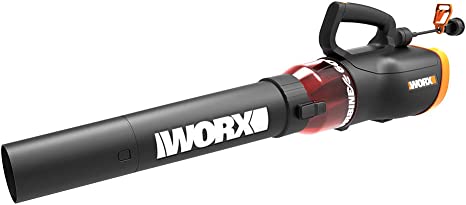
Using a leaf blower can be cumbersome. For an electric blower that delivers powerful airflow, it’s hard to beat the Worx Turbine Corded Leaf Blower. It delivers air at speeds up to 110 MPH with an impressive 600 cubic feet per minute (CFM), which is enough to corral even wet leaves and gravel. Our tester found that she could move a good amount of leaves in far less time than it would take to rake or broom—”[It] made tidying up the patio, a task that would usually take 15 minutes with a broom, a 3-minute job.”
Chainsaw

While most battery-powered tools are best suited for quick, light-duty jobs, the EGO Power+ CS1401 is ready and willing to do more.
- A 56-volt lithium-ion battery powers its 6,300 rpm motor, and it has a 14-inch bar. Experts give it top marks for ease of use, handling, and cutting speed.
The CS1401 features a low-kickback design with a chain brake, tension adjustment, and a high-efficiency brushless motor.
- The battery can handle roughly 100 cuts on a single charge, and the battery recharges reasonably quickly. The tool is powerful enough to cut through limbs up to a foot thick—not too shabby for a battery model.
At nearly 12 pounds, this chainsaw is a bit heavier than some lighter-duty models. A five-year warranty backs it; the battery is warranted for three years.
There’s nothing like the taste of a juicy steak grilled to perfection during the summer. Whether you’re cooking for yourself or a group, these tips will help you make the most of your grill.
The first step is to choose the right cut of meat. The best steaks for grilling are those that are thick and have a good amount of marbling, such as ribeye, t-bone, porterhouse, or New York strip. Make sure to let the meat come to room temperature before cooking, so it cooks evenly.
Next, heat your grill to medium-high heat. If you’re using charcoal, wait until the coals are white before adding the meat. Place your steaks on the grill and cook for 3-4 minutes per side for medium-rare or 4-5 minutes per side for medium.
Here’s a video explaining also!